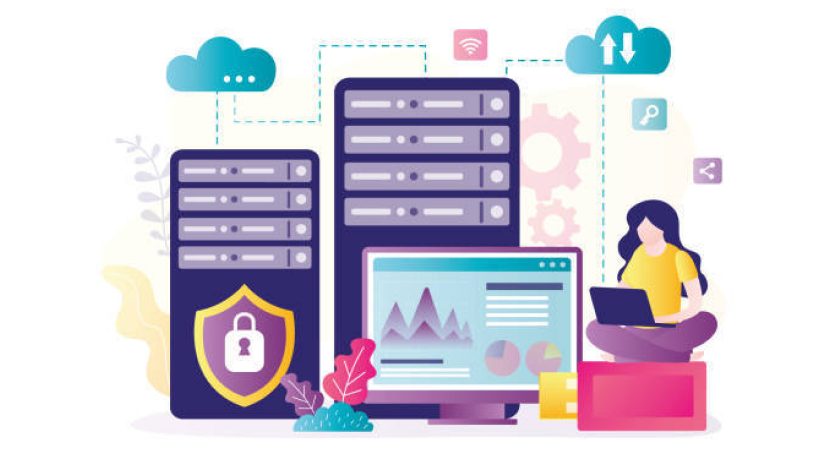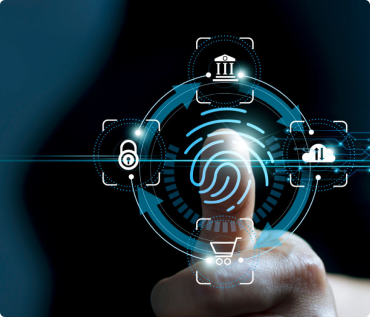IAM
stands for Identity and Access Management. It has been highly helpful for the
IT departments in huge enterprises to handle employees in Active Directory. In
a modern IT atmosphere, IAM plays a vital role in approving geographically
dispersed workforces as they relate to internal resources, cloud resources, and
SaaS (software-as-a-service) applications. Hereafter, IT teams are not able to
manage individual user permissions and rights with the rapid increase in remote
work and SaaS applications. IAM tends to off-load the responsibility of
individual access management and helps in automating the on-boarding as well as
off-boarding processes.
With the advancement of IAM, companies are experiencing a manageable & secure digital transformation in regard to identity management & security. IAM helps in possessing frictionless, unanimous, and end-user-centric digital workspace where a lot of identity & access management become more automated. Organizations are required to bring in the best approaches for IAM enforcement. However, the friction related to each & every IAM implementation helps in determining the success or failure of an endeavor. In 2023, IAM researchers and vendors are concentrating on more new ways and security postures in order to make IAM implementation more successful.
In this blog, we have given quick guidance on the best identity and access management trends in 2023.
What Is Meant By Identity And Access
Management Software?
Organizations make use of IAM software to implement their security controls, considering who has gained access to corporate assets and facilitating the productivity of the workers with ease of access to the tools they require in order to perform their tasks. IAM software accomplishes this by enabling only authenticated and authorized users, such as office employees, devices, and contractors in order to access corporate resources at their reasonable permission level on the basis of predetermined policy-based controls.
By utilizing IAM software, the administrators of companies can instantly provision, and deprovision modify user identities and access rights to all the corporate assets at scale. Each & every user is granted the ideal level of access permissions on the basis of their user & group membership type. This makes it simple and easier for the security teams in order to handle who has gained access to what accounts at scale. When it comes to end users, to instantly gain access to the tools they require to perform their jobs instead of pausing for their individual accounts to be provisioned one after another.
List of Identity & Access Management Trends:
Let us now take a closer look at the various trends that organizations and IAM vendors should follow in 2023.
5 Key Identity and Access Management
Things to Consider
1) Enhancing AI & ML for Improved
Identification And Security — IAM solutions backed by AI (Artificial Intelligence) can help
in enhancing the security and identity recognition possibility in a more
precise way. In addition, leveraging machine learning algorithms actually
allows the IAM system to understand millions of user behaviors, actions, and
authentication transactions & anticipate anomalies or security violations.
Many tech visionaries are fantasizing about a future where ML (machine
learning) systems will be able to observe
computer sessions, recognize whether a genuine individual is accessing the
system, predict internal & external threats, and comprehend the data breach pattern ahead of
time.
2) Extra Concentration On User Consent And Data Privacy Via Compliance — Since more & more news is making headlines related to the leakage of user data and violation of privacy, organizations, and end-users are paying extra attention to data consent and data privacy. IAMs must strive to stay up-to-date with all the delinquent compliance and policies correlated to employee or user data. Latest or new regulations order or mandate organizations to take user consent seriously before storing any personal information. IAM providers are giving additional emphasis on staying aligned with all the compliance such as HIPAA, COPAA, SOX, GDPR, ISO/IEC 27017, etc.
3) Integrating Advanced MFA For Additional Security — As we know that MFA, i.e., Multi-factor authentication, can assist in securing your systems and accounts from possible breaches. In accordance with the report generated by Verizon, about 90% of breaches include son type of phishing attack. Nonetheless, cyber attackers are skilled enough to knock over your passwords and prudent authentication credentials. Therefore, IAM solutions must pay severe attention to mandating MFA via OTPs, and add a third covering of authentication evaluated by implicitly analyzing the behavior, geographic location, IP address, the device utilized, etc. Facilitating the risk-based authentication control (RBAC) feature can benefit companies in the long term. IAM providers are also concentrating on enhancing the RBAC feature via AI.
4) Machine Identity Via No Trust & No Privilege — IAMs must focus on promoting the Zero Trust security framework to manage cyber threats and safeguard systems, hybrid cloud atmospheres, and workers from unidentified dangers. So, in the Zero Trust model, individuals and employees will be reviewed for authentication as well as verification at the time of login and in between the session, so that they have to ascertain who they are before utilizing any resources from the organization. That is how brands can allow machine identity through IAM. In addition, institutions must promote at least privilege in tandem with the Zero Trust model so that the employees with the network receive limited resource access only to the systems that they are in actual need of. By implementing such an approach, organizations can automate the concept of machine identification.
5) Decentralized Identity Ecosystem — With the proliferation of identity thievery & leakage of privacy over the past recent years, companies from different sectors intend to incorporate decentralized identity ecosystems and do not utilize centralized systems in terms of identity management. That is why IAM vendors and product developers are concentrating on leveraging blockchain to make preparations for identity management in a decentralized structure. Through the technology of blockchain, enforcing a decentralized identity ecosystem will help in protecting user identity because such types of systems will pursue a user-centric model. The users will be accountable for handling their identity information. This way, it will also facilitate identity governance & administration (IGA) and several other regulatory obedience to align with the data privacy of the organization and security architecture.
How We At Smart-I, Aim To Assist You
We hope that our article has been helpful in giving you a clear idea about the top IAM (Identity & Access Management Trends) in 2023. Most of the modern IAM vendors or service providers are actively working on leveraging various Identity & Access Management trends.
You
can get in touch with our team of experts to
schedule your next IAM assessment today itself!





